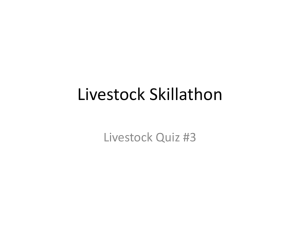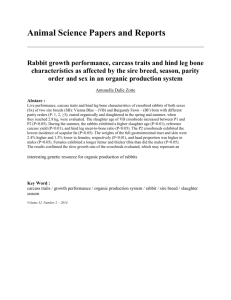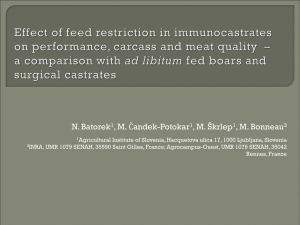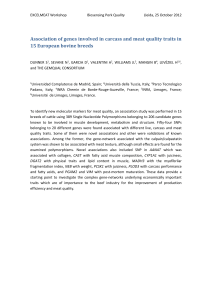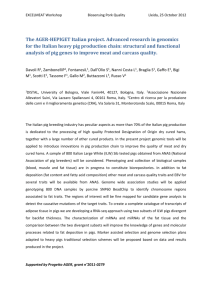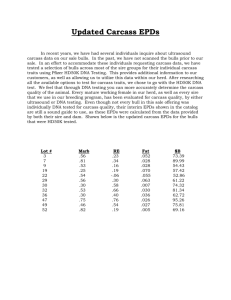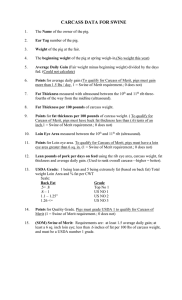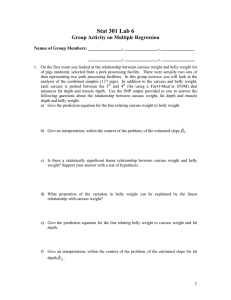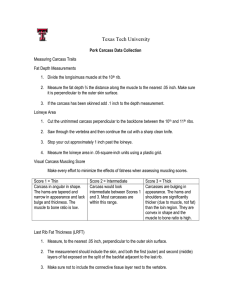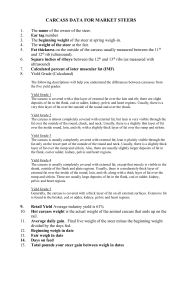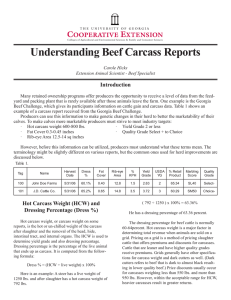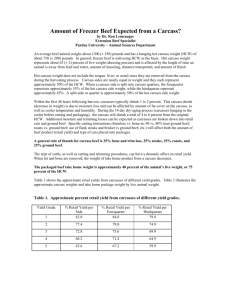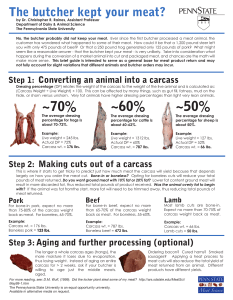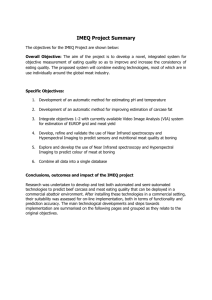Association study between pig PLIN1 and PLIN2 gene
advertisement
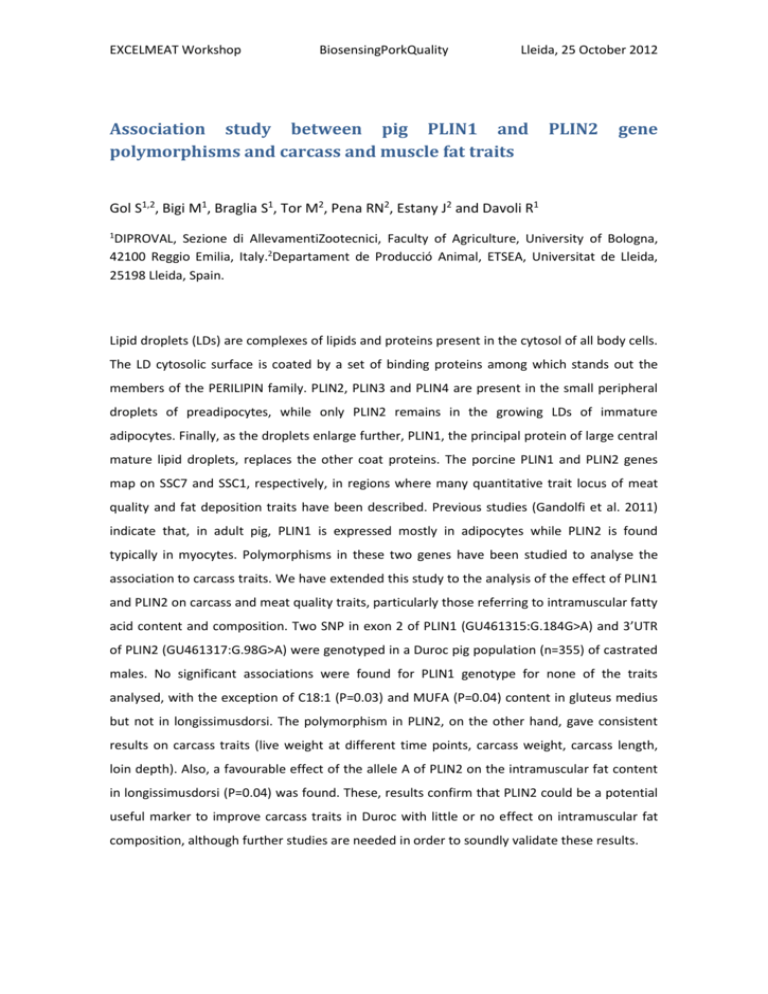
EXCELMEAT Workshop BiosensingPorkQuality Lleida, 25 October 2012 Association study between pig PLIN1 and polymorphisms and carcass and muscle fat traits PLIN2 gene Gol S1,2, Bigi M1, Braglia S1, Tor M2, Pena RN2, Estany J2 and Davoli R1 1 DIPROVAL, Sezione di AllevamentiZootecnici, Faculty of Agriculture, University of Bologna, 42100 Reggio Emilia, Italy.2Departament de Producció Animal, ETSEA, Universitat de Lleida, 25198 Lleida, Spain. Lipid droplets (LDs) are complexes of lipids and proteins present in the cytosol of all body cells. The LD cytosolic surface is coated by a set of binding proteins among which stands out the members of the PERILIPIN family. PLIN2, PLIN3 and PLIN4 are present in the small peripheral droplets of preadipocytes, while only PLIN2 remains in the growing LDs of immature adipocytes. Finally, as the droplets enlarge further, PLIN1, the principal protein of large central mature lipid droplets, replaces the other coat proteins. The porcine PLIN1 and PLIN2 genes map on SSC7 and SSC1, respectively, in regions where many quantitative trait locus of meat quality and fat deposition traits have been described. Previous studies (Gandolfi et al. 2011) indicate that, in adult pig, PLIN1 is expressed mostly in adipocytes while PLIN2 is found typically in myocytes. Polymorphisms in these two genes have been studied to analyse the association to carcass traits. We have extended this study to the analysis of the effect of PLIN1 and PLIN2 on carcass and meat quality traits, particularly those referring to intramuscular fatty acid content and composition. Two SNP in exon 2 of PLIN1 (GU461315:G.184G>A) and 3’UTR of PLIN2 (GU461317:G.98G>A) were genotyped in a Duroc pig population (n=355) of castrated males. No significant associations were found for PLIN1 genotype for none of the traits analysed, with the exception of C18:1 (P=0.03) and MUFA (P=0.04) content in gluteus medius but not in longissimusdorsi. The polymorphism in PLIN2, on the other hand, gave consistent results on carcass traits (live weight at different time points, carcass weight, carcass length, loin depth). Also, a favourable effect of the allele A of PLIN2 on the intramuscular fat content in longissimusdorsi (P=0.04) was found. These, results confirm that PLIN2 could be a potential useful marker to improve carcass traits in Duroc with little or no effect on intramuscular fat composition, although further studies are needed in order to soundly validate these results.
